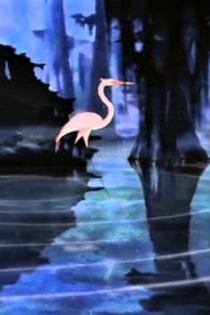
Samuel Armstrong
1893 - 2976Blue Bayou
Samuel Armstrong
A meditative nighttime tour through a swamp to the title song. A stork walks slowly through the water, takes a brief flight, and lands again; we examine the ripples his movement makes. A second stork joins in on a second slow, sweeping flight.
Blue Bayou

The Nutcracker Suite
Samuel Armstrong
Selections from the ballet suite underscore scenes depicting the changing of the seasons from summer to autumn to winter. A variety of dances are presented with fairies, fish, flowers, mushrooms, and leaves, including "Dance of the Sugar Plum Fairy", "Chinese Dance", "Arabian Dance", "Russian Dance", "Dance of the Flutes" and "Waltz of the Flowers".
The Nutcracker Suite

Toccata and Fugue in D minor
Samuel Armstrong
A Fantasia segment: Live-action shots of the orchestra illuminated in blue and gold, backed by superimposed shadows, fade into abstract patterns. Animated lines, shapes and cloud formations reflect the sound and rhythms of the music
Toccata and Fugue in D minor

Clair de Lune
Samuel Armstrong
Leopold Stokowski
"Clair de Lune" was fully animated and scored when it was deleted from Fantasia in early 1940, a casualty of Fantasia's excessive length. In February 1942, inking, painting and technicolor photography were completed for "Clair de Lune" as a short subject, but it was not released. In 1946 it was edited , reshaped and re-scored as the popular music sequence "Blue Bayou" in "Make Mine Music". Previous attempts to recreate "Clair de Lune" were frustrated by missing animation and Stokowski footage. A nitrate workprint of the original version located in 1992 has allowed "Clair de Lune" to be completely reconstructed as Walt Disney intended it to be seen.
Clair de Lune


